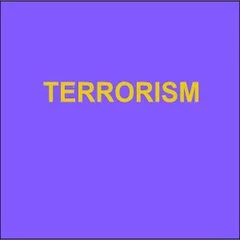By Mary Allen
In 2020, consistent with historical trends, violent Criminal Code offences accounted for about one in every five crimes that came to the attention of police. Firearm-related violent crime typically represents less than 3% of police-reported violent crime in Canada; nevertheless, it has a significant emotional and physical impact on victims, families and communities. Additionally, rates of firearm-related violence have seen a general increase over the past several years. Concern about gun crime is long standing and a variety of approaches have been used to address it, including changes in legislation (see Text box 1). In April 2020, 22 people were killed in a mass shooting in Nova Scotia, the deadliest mass shooting in Canada in recent years. In particular, the Nova Scotia shooting led to a ban on assault-style firearms and renewed discussions around gun control and access to illegal weapons. This Juristat article uses data from the Uniform Crime Reporting (UCR) Survey and the Homicide Survey to provide a detailed examination of recent trends in firearm-related crime in Canada and the characteristics of these crimes over time and by region. In this article, firearm-related violent crime refers to victims of violent crimes where the most serious weapon present in the incident was a firearm and where police deemed the presence of the firearm relevant to the incident. Of note, for an incident to be considered firearm-related, a firearm need only be present during the commission of the offence, not necessarily used. This measure does not include non-violent Criminal Code offences where a firearm was present, including administrative offences such as unsafe storage, or firearm-specific violent offences such as discharging a firearm with intent where there was no victim identified. The article is divided into several sections beginning with an “Overview of firearm-related violent crime in 2020” examining geographic differences.1 This is followed by a section examining factors driving the change in firearm-related crime over 12 years, comparing two time periods (2009 to 2014 and 2015 to 2020) “Trends in firearm-related violent crime”. The article then examines the “Characteristics of firearm-related violent crime”, especially the types of violations involved and types of firearms present. This is followed by sections on “Characteristics of victims of firearm-related crime” as well as “Characteristics of individuals accused in violent incidents where a firearm was present”. Additional information is provided on non-violent weapons offences and firearm-related violent crimes involving organized crime or street gangs. The article uses data from the UCR trend file which contains information from 2009 to 2020. The article compares pooled information for the two six-year periods (2009 to 2014 and 2015 to 2020) to examine factors related to the increased rates of firearm-related violent crime observed in recent years.2 Combining the data into two six-year periods allows for a detailed examination of changes related to this overall increase. The periods were defined with reference to 2015 (before and after 2015) as 2015 was the year with the most notable increase in firearm-related crime over the 12 year period and this increase occurred in most jurisdictions. Moreover, 2015 was a notable year for crime in general as it marked the first increase in all police-reported crime since 2003. This article provides an analysis of police-reported firearm-related violent crime using currently available data. However, there are still many data gaps related to firearms used in crime. Statistics Canada has been working with police services to help improve information available on these types of crime.
Ottawa: Statistics Canada, 2022. 51p.





